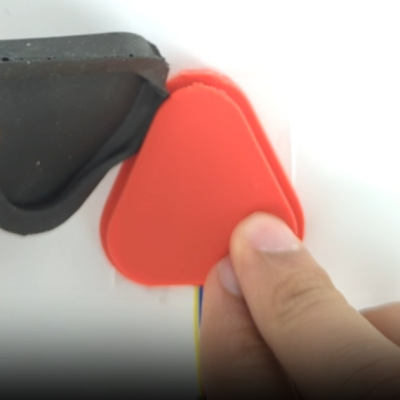Automating tasks with a robot sounds appealing, but not everyone has the budget for an Aismo or Kuka. [FABRI Creator] has a great tutorial on how to build your own mini robotic arm for small, repeatable tasks.
Walking us through the entire build, step-by-step, [FABRI Creator] shows us how to populate the custom-designed PCB and where to put every servo motor and potentiometer to bring the creation to life. This seems like a great project to start with if you haven’t branched out into motion systems before since it’s a useful build without anything too complicated to trip up the beginner.
Beyond the usual ability to use the arm to perform tasks, this particular device uses an Arduino Nano to allow you to record a set of positions as you move the arm and to replay it over and over. The video shows the arm putting rings on a stand, but we can think of all kinds of small tasks that it could accomplish for us, letting us get back to writing or hacking.
If controlling a robot arm with potentiometers sounds familiar, maybe you remember this robot arm with an arm-shaped controller.
Continue reading “Mini Robotic Arm Lets You Start Your Own Mini Assembly Line”









 their lifespan. While the concept of food-based robots may seem unusual, the potential applications in medicine and reducing waste during food delivery are significant driving factors behind this idea.
their lifespan. While the concept of food-based robots may seem unusual, the potential applications in medicine and reducing waste during food delivery are significant driving factors behind this idea. activated charcoal (AC) electrodes on a gelatin substrate. Water is split into its constituent oxygen and hydrogen by applying a voltage to the structure. These gasses adsorb into the AC surface and later recombine back into the water, providing a usable one-volt output for ten minutes with a similar charge time. This simple structure is reusable and, once expired, dissolves harmlessly in (simulated) gastric fluid in twenty minutes. Such a device could potentially power a GI-tract exploratory robot or other sensor devices.
activated charcoal (AC) electrodes on a gelatin substrate. Water is split into its constituent oxygen and hydrogen by applying a voltage to the structure. These gasses adsorb into the AC surface and later recombine back into the water, providing a usable one-volt output for ten minutes with a similar charge time. This simple structure is reusable and, once expired, dissolves harmlessly in (simulated) gastric fluid in twenty minutes. Such a device could potentially power a GI-tract exploratory robot or other sensor devices.










